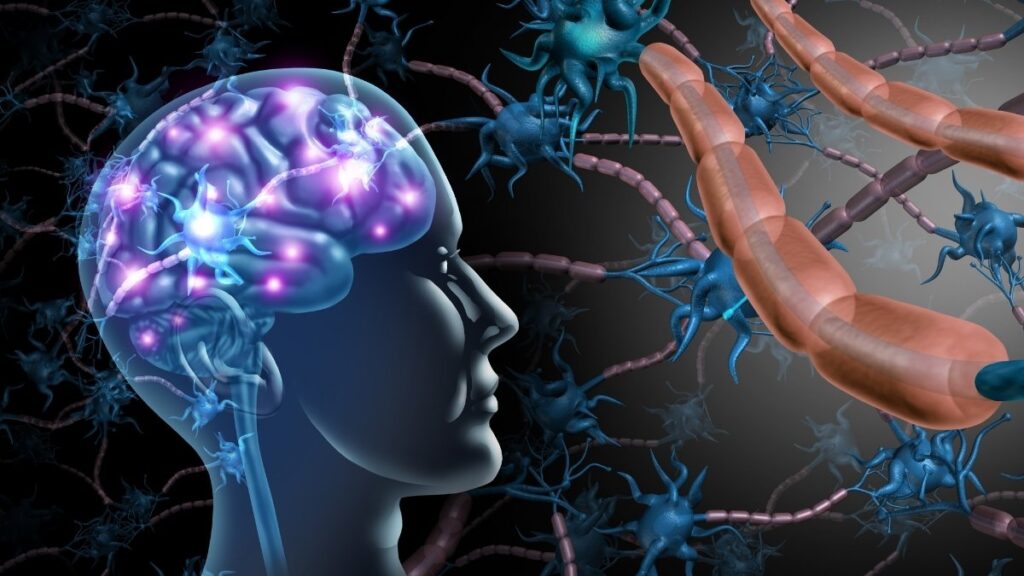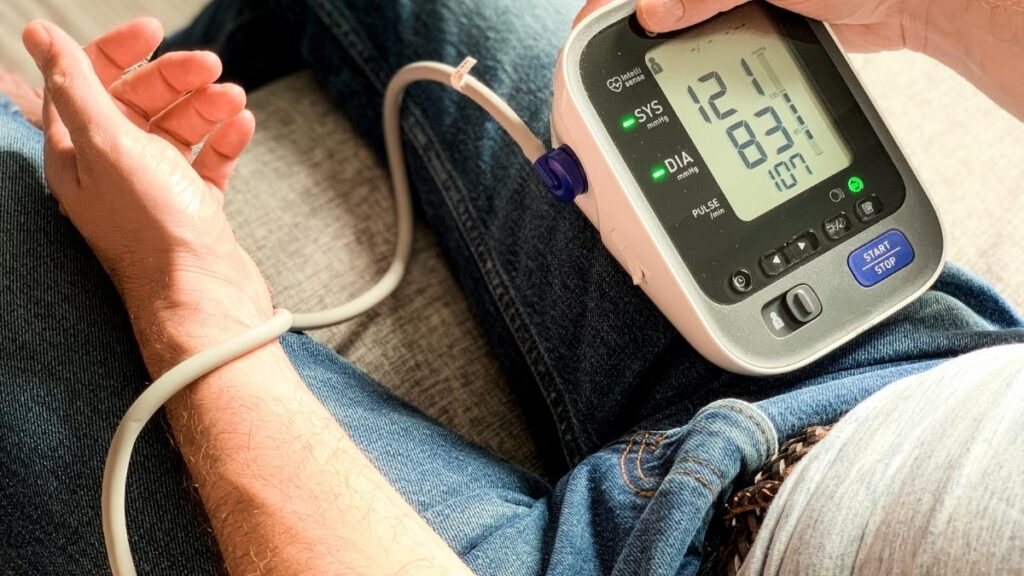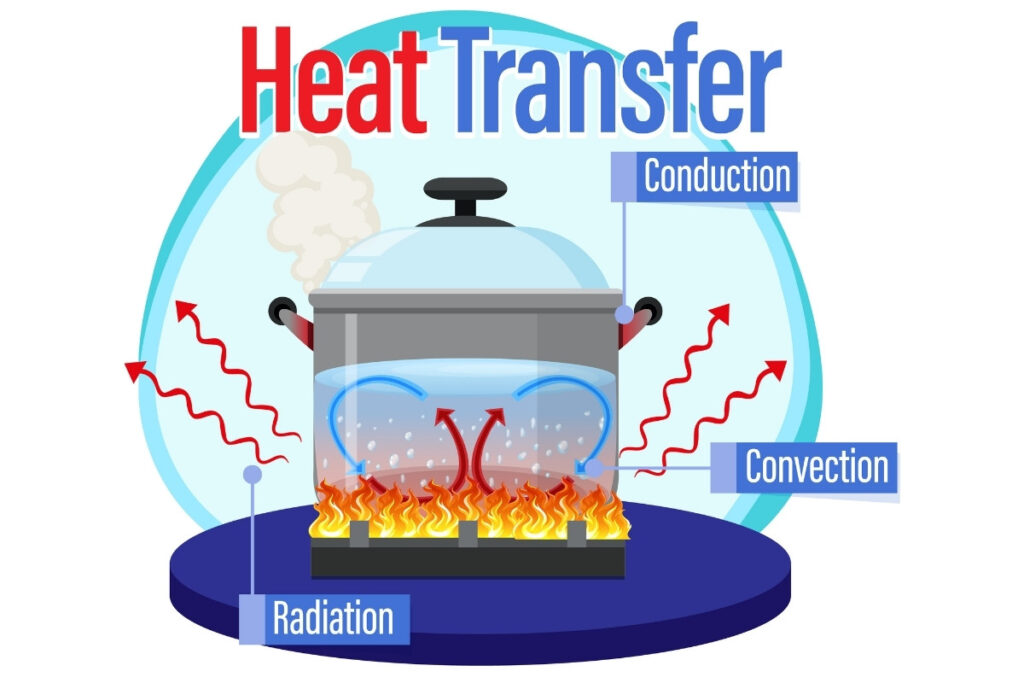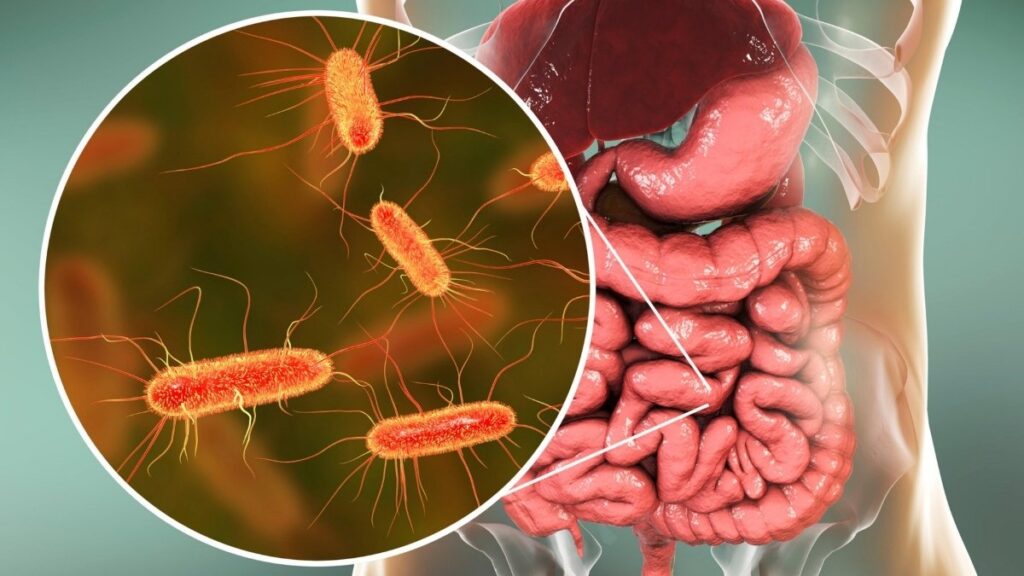From Hangry to Binging: My Experience Shows Why Intermittent Fasting Doesn’t Work for Everyone
Henry viewed intermittent fasting as the ultimate discipline test. He ignored the morning hunger pangs and pushed through the brain fog believing he was optimizing his biology. But by the time his eating window opened the biological demand for fuel overwhelmed his willpower.
He did not reach for a healthy meal but instead consumed high calorie comfort foods in a chaotic binge. This cycle of starvation and loss of control is not a failure of character. It is a predictable neuroendocrine response where stress hormones hijack the brain.
Emerging 2025 research confirms that for many men this popular trend spikes cortisol and tanks testosterone. This guide explores why the binge restrict loop happens and presents protein pacing as the superior metabolic alternative.
⏰ Your Hunger Clock: Fasting vs. Pacing
9:00 AM – Protein Pacing
Hunger & Stress Hormones: Gentle, rolling waves.
Result: Stays within a comfortable “Satiety Zone.”
1:00 PM – The Henry Cycle (Fasting)
Hunger & Stress Hormones (Ghrelin & Cortisol): Flatlined until now, then a sudden, vertical **SPIKE!**
Result: Enters “The Binge Zone” where impulse control drops to zero.
Key Takeaway
Fasting can create a hormonal emergency that triggers a binge, while protein pacing keeps your biology stable and controlled.
1. The Silent Failure of the Modern Faster

The narrative of Intermittent Fasting (IF) has dominated the health and wellness landscape for the better part of a decade, often presented as a metabolic panacea—a simple, binary switch between “feeding” and “fasting” that promises to unlock longevity, shred visceral fat, and sharpen cognitive function.
For many, particularly men driven by the ethos of optimization and resilience, IF appeals to a desire for discipline. It frames hunger not as a physiological signal, but as an obstacle to be overcome, a mental callous to be hardened.
However, a significant and growing cohort of individuals faces a reality that stands in stark contrast to the glowing testimonials of biohackers and fitness influencers.
This report posits that this failure mode is not a defect of character or a lack of willpower. Rather, it is a predictable, physiological backlash rooted in the dysregulation of the Hypothalamic-Pituitary-Adrenal (HPA) axis and the maladaptation of the brain’s reward circuitry.
As we move through 2025, the clinical conversation is shifting. New data has begun to expose the limitations of rigid time-restricted feeding, highlighting potential cardiovascular risks and the emergence of “protein pacing” as a superior metabolic strategy.
2. The Neuroendocrinology of “Hangry”: Why Willpower Cannot Compete with Biology

To understand why the “hangry” state leads to binging, one must first accept that hunger is not merely a sensation in the stomach; it is a high-priority alert signal integrated into the brain’s threat detection systems.
The transition from “hungry” to “hangry” represents a shift from a metabolic request for fuel to a neuroendocrine emergency response.
The Ghrelin-Cortisol Axis: The Biochemistry of Rage

The sensation of hunger is primarily mediated by ghrelin, a peptide hormone produced in the gastrointestinal tract. Often simplified as the “hunger hormone,” ghrelin’s role is far more complex and insidious when elevated for prolonged periods.
It is the only known peripherally produced orexigenic (appetite-stimulating) peptide, and its influence extends well beyond the hypothalamus, where appetite is regulated, into the amygdala, the brain’s fear and emotion center.
Research indicates a robust link between stress and eating, yet the mechanisms have often been misunderstood. We now understand that ghrelin abnormalities are involved in appetite dysregulation across various psychological states. Crucially, when blood sugar drops during a fast, ghrelin secretion spikes.
This spike does not occur in isolation; it triggers a cascade of counter-regulatory hormones designed to mobilize stored energy. The most potent of these is cortisol, the body’s primary stress hormone.
The “hangry” state, therefore, is a stress response. When an individual forces themselves to push through this state in the name of “discipline,” they are effectively dosing themselves with glucocorticoids.
Studies have shown that acute stress changes food palatability, suppressing appetite for “bland” nourishment while enhancing the drive for hyper-palatable comfort foods.
HPA Axis Dysregulation: Beyond the “Adrenal Fatigue” Myth

A critical distinction must be made regarding the long-term impact of this stress cycle. In popular culture, the burnout associated with chronic dieting is often termed “adrenal fatigue.” It is imperative to correct this nomenclature.
The medical consensus is that “adrenal fatigue”—the idea that the adrenal glands physically “burn out” and stop producing hormones—is not a recognized medical condition. The adrenal glands are incredibly resilient. The actual pathology lies upstream, in the brain’s command center: the HPA axis.
HPA Axis Dysfunction (HPA-D) describes a state where the communication feedback loop between the hypothalamus, pituitary gland, and adrenal glands becomes desensitized or dysregulated due to chronic activation.
Fasting acts as a stressor. In a healthy, resilient individual, the mild stress of fasting (hormesis) can trigger beneficial adaptations like autophagy. However, in an individual already burdened by life stressors, poor sleep, or a history of dieting, fasting becomes a chronic maladaptive stressor.
Symptoms of HPA-D often overlap with what users experience during failed fasting attempts:
Circadian Disruption: Feeling “wired and tired”—exhausted during the day but unable to sleep at night due to dysregulated cortisol curves.
Metabolic Inflexibility: An inability to switch smoothly between burning carbs and fat, resulting in hypoglycemia (dizziness, irritability) rather than stable energy.
Cognitive Deficits: “Brain fog” and memory issues, driven by the neurotoxic effects of chronically elevated cortisol on the hippocampus.
Research has demonstrated that individuals with higher baseline cortisol and ghrelin levels—markers of this dysregulation—are significantly more prone to food cravings and future weight gain.
Therefore, for someone with existing HPA-D, Intermittent Fasting is akin to pouring gasoline on a fire; it exacerbates the very stress response that drives visceral fat storage and binge eating behavior.
The Role of Hypoglycemia in Emotional Volatility

The link between low blood sugar (hypoglycemia) and aggression is well-documented. The brain, while only 2% of body weight, consumes roughly 20% of the body’s glucose-derived energy.
When glucose availability drops during a fast, the brain creates a “cerebral energy crisis.” To conserve energy, the brain downregulates activity in the prefrontal cortex—the area responsible for impulse control, social modulation, and long-term planning.
Simultaneously, the primitive brain (limbic system) remains highly active to scan for food. This creates a dangerous neurological profile: a silenced “adult in the room” (prefrontal cortex) and a screaming “toddler” (limbic system).
This physiology underlies the sudden outbursts of anger and the complete inability to resist binge foods once the decision to eat is made. The individual is not “weak”; they are chemically lobotomized by their own survival mechanisms.
3. The Anatomy of the Binge-Restrict Cycle
The “Binge-Restrict Cycle” is the behavioral manifestation of the neuroendocrine chaos described above. It is a self-perpetuating loop that entraps dieters, leading to psychological distress and, paradoxically, weight gain despite periods of starvation.
The Goal-Conflict Model of Eating

To understand why the binge occurs, we must look at the “Goal-Conflict Model” of eating behavior.
This psychological framework suggests that restrained eaters (chronic dieters) are in a constant state of conflict between two opposing goals: the goal of eating enjoyment (hedonic gratification) and the goal of weight control.
In unrestrained eaters, these goals are rarely in acute conflict; they eat when hungry and stop when full. For the intermittent faster, however, the goal of weight control requires the complete suppression of the eating goal for 16 to 20 hours.
This suppression requires significant cognitive resources. As the fast progresses and physiological hunger signals (ghrelin) intensify, the cognitive load increases.
The “disinhibition effect” occurs when a stimuli—such as the time window opening or a stressful event—breaks the cognitive dam. Once the restriction is breached, the “what the hell” effect kicks in.
The individual perceives the diet as “blown” for the day, leading to a total abandonment of self-regulation. Research confirms that dietary restraint is a strong predictor of disinhibition; the harder one pulls the rubber band of restriction, the harder it snaps back into bingeing.
Reward Circuitry Hyperactivation

The moment food is reintroduced after a “white-knuckle” fast, the brain’s response is fundamentally different from that of a person who has eaten regularly. The striatum, involved in reward processing and learning, becomes hyper-responsive.
Studies using fMRI have shown that high cortisol reactors (those who get most stressed/hangry by fasting) exhibit greater activation in reward-related brain areas like the amygdala and insula when presented with food cues.
This means that for the “hangry” faster, a slice of pizza is not just food; it is a pharmacological intervention. It provides a massive spike in dopamine and opioids that temporarily soothes the cortisol-induced anxiety.
This creates a powerful reinforcement loop: Fasting → Pain → Binge → Relief. The brain learns that bingeing is the solution to the pain of fasting.
Clinical Evidence: Fasting as a Precursor to Eating Disorders

While Intermittent Fasting is marketed as a health intervention, the eating disorder community has long recognized it as a potential gateway to pathology. The rigid rules of IF (“eat only at this time”) mimic the rules of anorexia and bulimia.
Research supports this concern. A 12-month study comparing 4:3 intermittent fasting (fasting every other day) to daily caloric restriction (DCR) found nuanced results.
While the 4:3 group actually showed improved binge eating scores on average, this was in a controlled trial with support. Conversely, observational studies in the general population paint a darker picture.
Carbohydrate-restrictive diets associated with IF resulted in higher levels of binge eating, with 31% of participants reporting binge behaviors. Furthermore, fasting was found to be a stronger risk factor for the future onset of bulimic pathology than general dieting.
The data suggests a bifurcation in response: for some, IF reduces obsession; for those with a history of emotional eating or high stress reactivity, IF strips away the structure of regular meals that keeps bingeing at bay, leading to a prevalence of binge eating symptoms.
4. The Masculine Trap: Testosterone, Cortisol, and the “Tough Guy” Myth
Anatomy of a Binge: The Cycle
The Trigger
Henry ignores his morning hunger signal (Ghrelin).
The Stressor
The body perceives famine; Cortisol rises to mobilize energy.
The Crash
Blood sugar drops; Brain fog sets in; The ‘hangry’ mood begins.
The Release
The eating window opens; Executive function fails under biological pressure.
The Binge
Rapid consumption of high-sugar/fat foods for a much-needed dopamine hit.
The Guilt
Henry vows to fast ‘harder’ tomorrow to make up for it… starting the cycle over.
“Willpower cannot compete with Survival Biology.”
Men are often the primary target for aggressive fasting protocols, sold on promises of ancient hunter-gatherer vitality and “alpha” hormonal optimization. However, for the male physiology, particularly in the context of high stress, the reality of fasting can be catabolic to both muscle and hormonal health.
The Testosterone-Cortisol Trade-off

Testosterone and cortisol share an inverse relationship; when one is chronically elevated, the other is typically suppressed. As established, fasting acts as a stressor that elevates cortisol. For men, maintaining high testosterone levels requires a physiological state of safety and abundance, not starvation.
While some acute short-term fasting studies suggest minor increases in growth hormone, the effects on testosterone are less favorable. Research indicates that in lean, physically active young males, intermittent fasting can reduce testosterone levels.
This reduction is likely mediated by the energy deficit and the stress response. Additionally, extended fasting has been linked to lower levels of Sex Hormone Binding Globulin (SHBG), which can alter the bioavailability of androgens.
The “hangry” state in men is often dismissed as a need to “toughen up.” In reality, irritability and aggression in fasting men can be a symptom of this hormonal crash—a combination of hypoglycemia and the cortisol-induced suppression of anabolic hormones.
The result is not optimized performance, but rather a state of “low T” behaviors: fatigue, loss of libido, and mood instability.
Muscle Catabolism and Metabolic Rate

The primary driver of basal metabolic rate in men is lean muscle mass. The “binge-restrict” cycle is particularly damaging to muscle tissue.
During the fasting window, if cortisol is excessively high, the body may turn to gluconeogenesis—breaking down muscle tissue for glucose—before it efficiently accesses fat stores, especially if the individual is not “fat adapted.”
When the binge occurs, the massive influx of calories (often low-protein, high-energy) promotes fat storage due to the insulin spike, but does not necessarily repair the muscle tissue if protein intake is not prioritized.
Over time, this leads to a composition shift known as “skinny fat” (sarcopenic obesity), where weight might remain stable, but muscle mass decreases while visceral fat increases, further worsening insulin sensitivity and hormonal health.
5. The 2025 Safety Signal: Cardiovascular Risks and the 8-Hour Window
As of 2025, the safety profile of strict time-restricted eating (TRE) has come under intense scrutiny. For years, the assumption was that “tighter is better”—that an 8-hour, 6-hour, or even 4-hour eating window yielded superior autophagic and metabolic benefits.
Emerging data challenges this dogma, suggesting that for the general population, and specifically for those prone to bingeing, these tight windows may carry significant risks.
The Cardiovascular Mortality Signal

A pivotal moment in the re-evaluation of IF occurred with the release of data presented at the American Heart Association and subsequently discussed in major 2025 health reviews.
This research identified a concerning correlation: individuals adhering to an eating window of less than 8 hours showed a significantly higher risk of cardiovascular death—up to 91% higher in some analyses—compared to those eating over a 12-16 hour window.
While epidemiologists caution that correlation does not prove causation (it is possible that people with existing health issues gravitate toward restrictive diets), the biological plausibility exists.
Compressing total daily caloric and nutrient needs into a short window places a heavy postprandial load on the metabolic system. The body must process a day’s worth of lipids and glucose in a few hours, potentially leading to spikes in triglycerides and inflammatory markers.
Conversely, the prolonged fasting period may keep cortisol levels chronically elevated in susceptible individuals, contributing to hypertension and endothelial stress. For the “hangry” faster who ends the fast with a binge, the stress on the heart is twofold: the stress of starvation followed by the shock of overfeeding.
The Dropout Reality

Beyond the physiological risks, the sustainability of strict IF is questionable. Clinical trials have consistently shown high dropout rates for alternate-day fasting and strict TRE, ranging from 25% to 38%, which is significantly higher than more moderate dietary interventions.
The high attrition rate is a direct reflection of the binge-restrict mechanism. A diet that requires fighting against powerful neurobiological drives is inherently fragile.
When participants drop out, they rarely return to baseline; they often rebound, gaining more weight than they lost—a phenomenon known as “overshoot” driven by the body’s attempt to restore energy reserves after perceived famine.
6. Circadian Rhythm Eating: The Science of Alignment
If strict Intermittent Fasting is the “blunt instrument” of metabolic health, Circadian Rhythm Eating (CRE) is the scalpel.
Based largely on the pioneering work of Dr. Satchin Panda at the Salk Institute, CRE focuses not on starvation, but on alignment. It offers a solution to the “hangry” faster by mitigating the cortisol response while preserving the metabolic benefits of timed eating.
The Peripheral Clock Network

Every cell in the human body contains a molecular clock. These peripheral clocks regulate gene expression, turning on “metabolic machinery” at specific times of day.
The master clock in the brain (the Suprachiasmatic Nucleus or SCN) is entrained by light, but the peripheral clocks in the liver, gut, and pancreas are entrained by food.
When a person skips breakfast and eats late into the night (a common pattern in 16:8 fasting where the window is 1 PM to 9 PM), they create “metabolic jet lag.”
The brain thinks it is day (due to light), but the liver thinks it is night (due to lack of food in the AM and overload in the PM). This desynchronization disrupts glucose metabolism and insulin sensitivity.
Dr. Panda’s research has shown that eating within a consistent window of 10 to 12 hours—crucially, a window that begins in the morning—can correct these defects.
Mice fed a high-fat diet within a 10-hour window were protected from obesity and diabetes, even without calorie restriction. This effect was driven by the synchronized expression of genes across 22 organ systems.
Early Time-Restricted Feeding (eTRF)

For the binge-prone individual, the specific timing of the window is critical. Most “hangry” fasters utilize a Late Time-Restricted Feeding (lTRF) schedule (skipping breakfast). However, human insulin sensitivity is highest in the morning and declines throughout the day.
Studies on Early Time-Restricted Feeding (eTRF), where the window might be 8 AM to 4 PM or 6 PM, show superior results for blood sugar control and autophagy compared to late windows.
By fueling the body when it is biologically primed to receive energy, the cortisol spike associated with morning starvation is avoided. The “hangry” response is preempted because the brain receives glucose when it demands it most—at the start of the active phase.
This approach aligns with the “Henry” persona’s need for performance. Instead of white-knuckling through the morning meeting in a fog, the individual is fueled.
The fasting period happens during sleep and the late evening, times when the body should naturally be winding down and when late-night snacking (the most common form of bingeing) typically occurs.
7. Protein Pacing: The 2025 Metabolic Solution
While Circadian Rhythm Eating addresses the when, “Protein Pacing” addresses the what and how, specifically targeting the satiety mechanisms that prevent bingeing. Emerging research in 2024 and 2025 has elevated this strategy as a potent alternative to caloric restriction.
The Mechanism of Satiety and Thermogenesis

Protein Pacing involves consuming moderate servings of protein (25-50g) spaced evenly throughout the day (typically 4 meals, every 3-4 hours). This strategy leverages the “Thermic Effect of Food” (TEF), where the body burns more calories digesting protein than fats or carbs, but its true power lies in satiety.
Protein intake triggers the release of PYY and GLP-1, gut hormones that signal fullness to the brain and suppress ghrelin. By pacing this intake, the ghrelin curve is flattened.
Instead of the violent peaks and valleys of hunger seen in IF, the protein pacer experiences a gentle undulation of appetite. This prevents the amygdala-hijacking “hangry” state from ever taking hold.
Gut Microbiome and “Food Noise”

Recent studies published in Nature Communications and other high-impact journals have highlighted that protein pacing combined with moderate intermittent fasting (a 12-hour window) significantly enhances gut microbiome diversity compared to calorie restriction alone.
A diverse microbiome is linked to better mood regulation and reduced “food noise”—the intrusive thoughts about food that plague dieters.
For the man who struggles with bingeing, this is the “off switch.” By feeding the gut microbiome consistently with high-quality protein and fiber, the gut-brain axis transmits signals of safety and abundance, reducing the biological drive to binge.
8. Diagnostic and Actionable Tools
Moving from theory to practice requires tools that bypass the “diet mentality” and engage the user’s interoception (body awareness).
The Hunger-Satiety Scale: A Calibration Tool

The “Hunger-Satiety Scale” is the primary instrument for preventing the binge. The goal is not to stay at “0” (starvation) but to oscillate between “3” and “6.” The danger zone for bingeing is 1-2.
1 – Starving: Dizzy, irritable, headache, “hangry.” No energy. (The Binge Zone)
2 – Very Hungry: Unable to concentrate, stomach growling aggressively.
3 – Hungry: Ready to eat, stomach feels empty. (The Start Zone)
4 – Pangs: Beginning signs of hunger, thinking about food.
5 – Neutral: Neither hungry nor full.
6 – Satisfied: Comfortably full, could eat more but don’t need to. (The Stop Zone)
7 – Full: Feeling food in the stomach, slight distension.
8 – Stuffed: Uncomfortable, clothes feel tight.
9 – Bloated: Very uncomfortable, lethargic.
10 – Sick: Nauseous, painfully full. (The Binge Result)
The Henry Rule: “If you hit a 2, you have already failed the strategy. The moment you drift into the ‘hangry’ zone (1-2), your prefrontal cortex goes offline. You must eat at a 3 or 4 to maintain executive control over your food choices”.
The “Henry” Protocol: A Sample Schedule for Men

This schedule integrates Satchin Panda’s circadian research with the Protein Pacing model to optimize testosterone and minimize cortisol.
07:00 AM – Wake Up & Hydrate: Light exposure (outdoors) to set the SCN master clock.
08:00 AM – Meal 1 (The Anchor): 40g Protein. (e.g., Eggs, Greek Yogurt, or Whey). Breaking the fast early lowers morning cortisol and sets the metabolic rhythm.
12:00 PM – Meal 2: 40g Protein + Fiber + Healthy Fats.
04:00 PM – Meal 3 (The Bridge): 30g Protein. Crucial Step. This meal bridges the gap between lunch and dinner, preventing the evening “ghrelin spike” that causes 90% of binges.
07:00 PM – Meal 4 (Dinner): 30g Protein + Carbohydrates. Carbs at night can help facilitate tryptophan transport and serotonin production for sleep.
08:00 PM – Kitchen Closed: This creates a natural 12-hour fast (8 PM to 8 AM) that aids digestion and heart health without triggering the “starvation alarm.”
Conclusion: From Starvation to Alignment
The allure of Intermittent Fasting lies in its simplicity, but biological systems are rarely simple. For the individual who finds themselves oscillating between extreme hunger (“hangry”) and loss of control (bingeing), the data is clear: the protocol is not failing you; it is breaking you.
The physiological cascade of ghrelin spikes, cortisol elevation, HPA axis dysregulation, and testosterone suppression creates a metabolic environment where bingeing is not a choice, but a biological inevitability.
The “tough guy” approach of white-knuckling through this distress is counterproductive, leading to muscle loss, hormonal down-regulation, and potentially increased cardiovascular risk.
The path forward in 2025 is one of precision and alignment. By adopting a Circadian Rhythm Eating schedule that respects the body’s internal clocks, and implementing Protein Pacing to stabilize the neurochemistry of satiety, one can achieve the goals of metabolic health—fat loss, energy, focus—without the collateral damage of the binge-restrict cycle.
Metabolic health is not defined by how long one can endure starvation, but by how effectively one can fuel the machine.








